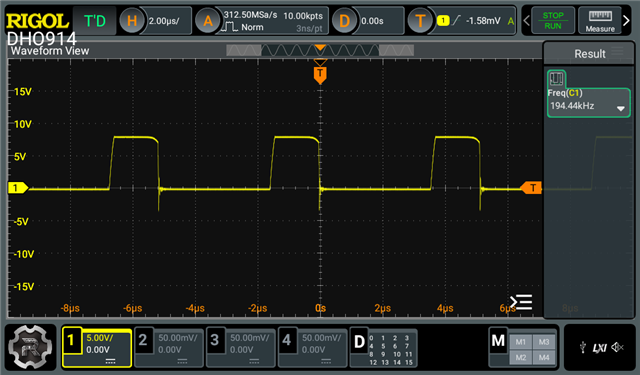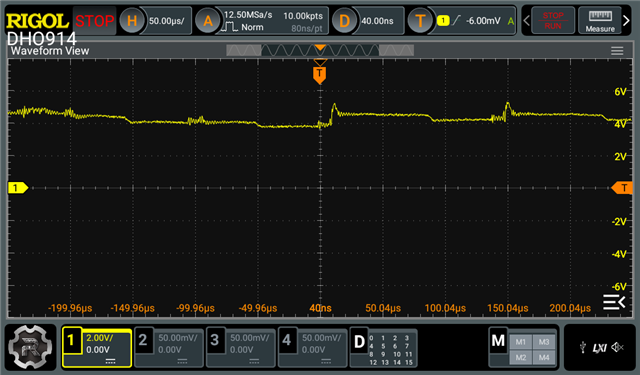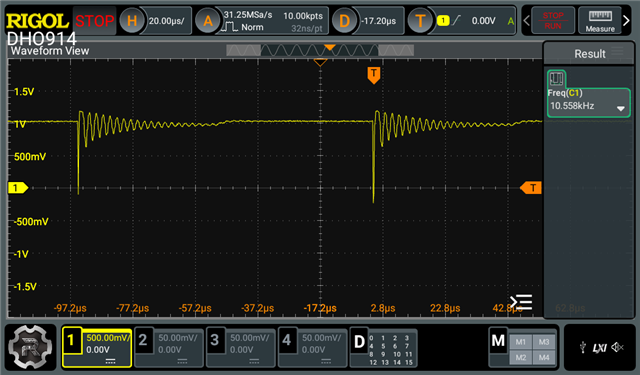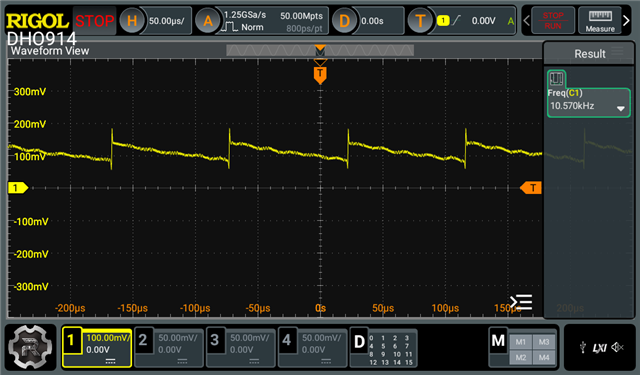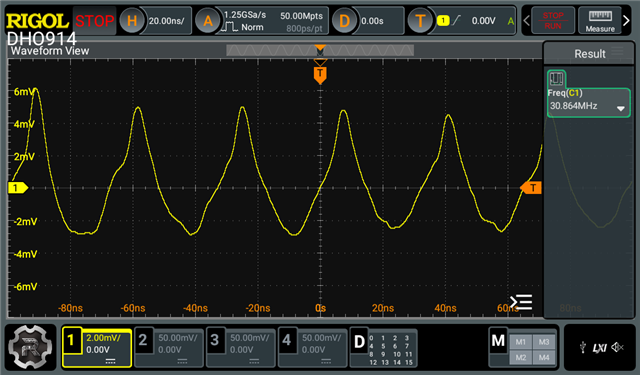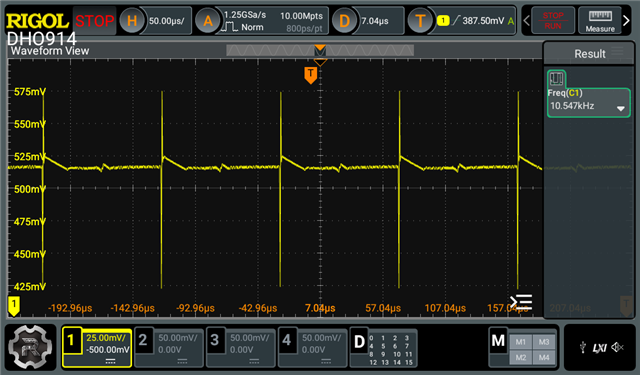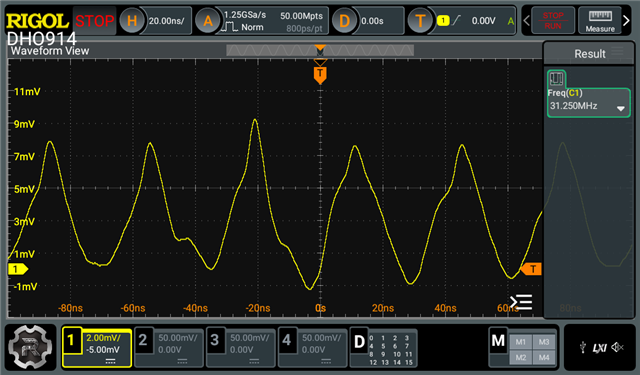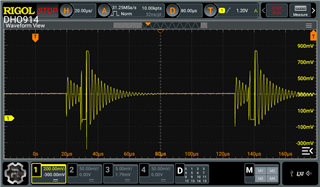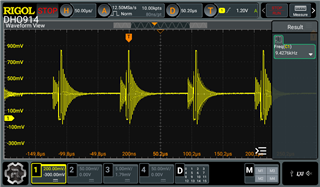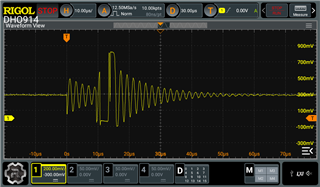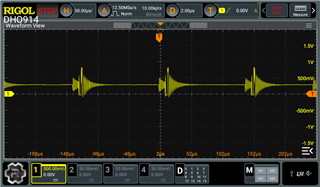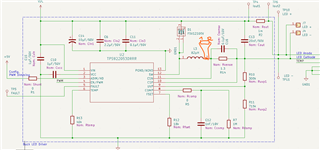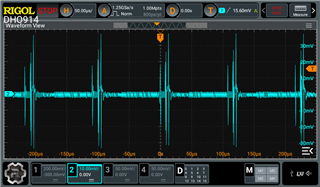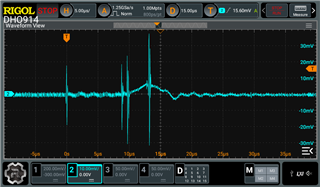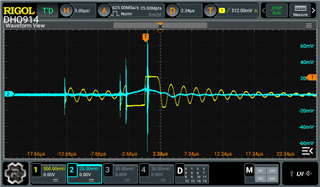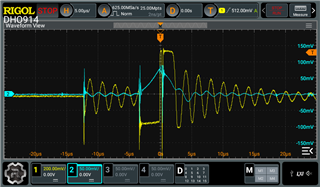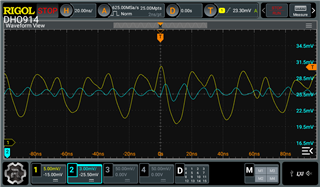Other Parts Discussed in Thread: TPS922055DRRREVM
Dear,
I am trying to drive two led in serie ILed.fs = 150mA with a PWM input at 70%@194MHz.
Power input Vin should be between [9-36]V.
Unfortunately the Leds can be powered only with Vin@7.3V. If Vin is under or above this value Leds are shuting down.
I probably have a poor understanding of the use of the component. There is also subjects on the component tuning side (Rsense,...).
Here is a picture of Vout (Vin@7.3V) probeX10. Vout is a 5.3V and should be at 6.4V.

ILed is measured between TP4 and TP6 see shematic below. The value measured is extremely low.
Here is a first picture of the signal ILed:

A a second picture with a zoom :

Here is a picture of the schematic :

Thanks in advance for your help.


